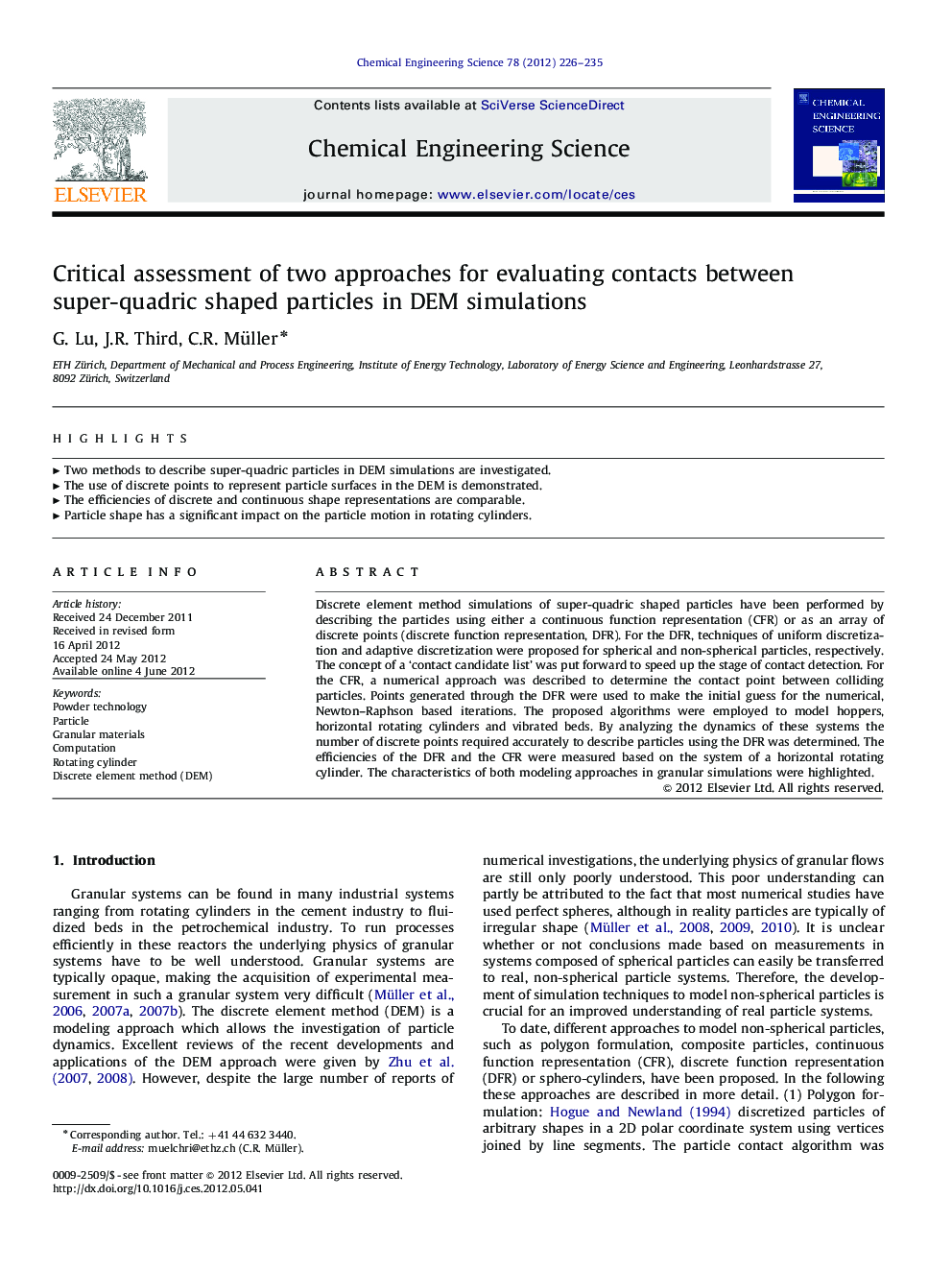| کد مقاله | کد نشریه | سال انتشار | مقاله انگلیسی | نسخه تمام متن |
|---|---|---|---|---|
| 155619 | 456905 | 2012 | 10 صفحه PDF | دانلود رایگان |

Discrete element method simulations of super-quadric shaped particles have been performed by describing the particles using either a continuous function representation (CFR) or as an array of discrete points (discrete function representation, DFR). For the DFR, techniques of uniform discretization and adaptive discretization were proposed for spherical and non-spherical particles, respectively. The concept of a ‘contact candidate list’ was put forward to speed up the stage of contact detection. For the CFR, a numerical approach was described to determine the contact point between colliding particles. Points generated through the DFR were used to make the initial guess for the numerical, Newton–Raphson based iterations. The proposed algorithms were employed to model hoppers, horizontal rotating cylinders and vibrated beds. By analyzing the dynamics of these systems the number of discrete points required accurately to describe particles using the DFR was determined. The efficiencies of the DFR and the CFR were measured based on the system of a horizontal rotating cylinder. The characteristics of both modeling approaches in granular simulations were highlighted.
► Two methods to describe super-quadric particles in DEM simulations are investigated.
► The use of discrete points to represent particle surfaces in the DEM is demonstrated.
► The efficiencies of discrete and continuous shape representations are comparable.
► Particle shape has a significant impact on the particle motion in rotating cylinders.
Journal: Chemical Engineering Science - Volume 78, 20 August 2012, Pages 226–235